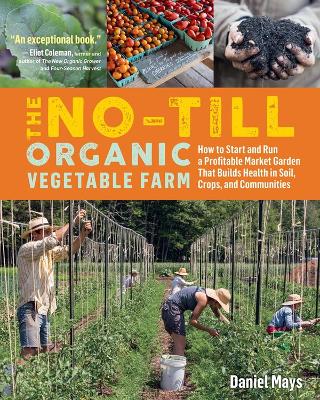Reviewed by annieb123 on
The No-Till Organic Vegetable Farm is a comprehensive and well written guide to creating, troubleshooting, and running a market garden farm without tilling/digging (which we are beginning to find out is actually harmful in most situations). Due out 10th Nov 2020 from Storey Publishing, it's 256 pages and will be available in paperback and ebook formats.
Although ostensibly aimed at the professional mid-scale farmer, there are a wealth of takeaways for the home hobbyist gardener with logical accessible implementable advice for starting up, making plans, doing the work, planting, irrigation systems, weeding, soil building and soil care, harvesting, marketing produce, labor, recordkeeping, and measuring success. The author provides the benefit of his near-decade of experience performing and succeeding at the necessary tasks to steward the earth he farms, produce quality food, and strengthen local economies and provide a valuable sustainable service to the local community. The book also includes a glossary, links and resource lists for further reading, and a cross referenced index.
Five stars. Lots and lots (and lots) of inspiration. Aesthetically an enjoyable read with a truly astounding amount of meticulous research and annotation. This would make a superlative selection for garden groups, community gardening, allotment/collective libraries, smallholders, and garden lovers.
Disclosure: I received an ARC at no cost from the author/publisher for review purposes.
Reading updates
- Started reading
- 15 September, 2020: Finished reading
- 15 September, 2020: Reviewed
